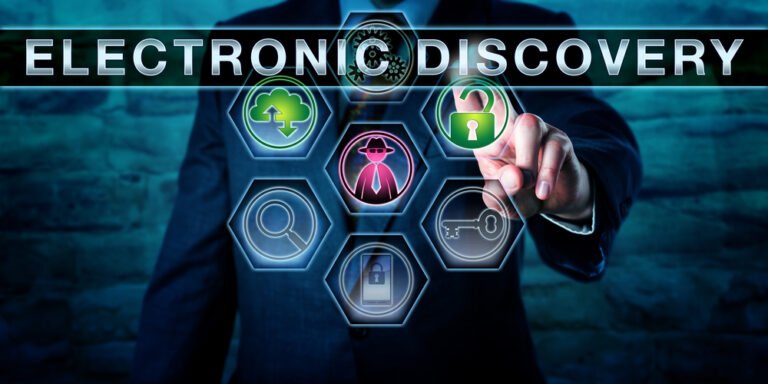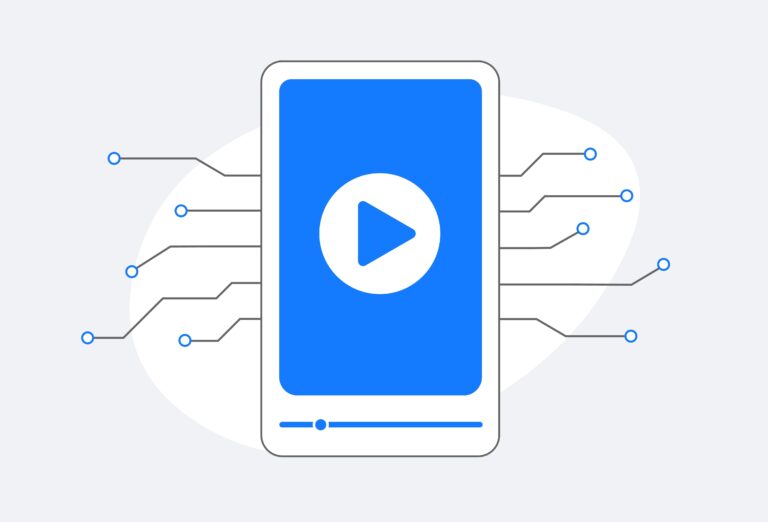SEO Content Outline: Best eDiscovery Software for Small Law Firms
Did you know that 90% of all information created in the last two years exists only in digital format? For small law firms, this explosion of electronic data presents both an opportunity and a challenge. While large firms have dedicated IT teams and unlimited budgets for enterprise eDiscovery solutions, smaller practices need tools that are powerful yet affordable, comprehensive yet simple to use.
I’ve spent over a decade helping law firms navigate the complex world of electronic discovery, and here’s what I’ve learned: the right eDiscovery software can level the playing field! Small firms can now access the same sophisticated document review capabilities that were once reserved for BigLaw. But with dozens of options flooding the market, how do you choose the perfect fit for your practice?
In this comprehensive guide, we’ll explore the best eDiscovery software specifically tailored for small law firms, breaking down costs, features, and real-world usability to help you make an informed decision that transforms your practice.
What is eDiscovery Software and Why Small Firms Need It
Electronic discovery has evolved from a luxury to an absolute necessity. In my experience working with hundreds of small firms, those still relying on manual document review are hemorrhaging both time and money while exposing themselves to significant legal risks.
eDiscovery software automates the identification, preservation, collection, processing, review, and production of electronically stored information (ESI) during litigation. For small firms handling everything from personal injury cases to commercial disputes, this technology has become indispensable.
The legal landscape has shifted dramatically. Federal Rule of Civil Procedure 26(f) requires attorneys to discuss electronic discovery during case planning conferences. Courts expect lawyers to be competent in technology, and sanctions for inadequate ESI handling have increased 400% since 2015. I’ve witnessed small firms face devastating penalties simply because they couldn’t properly manage electronic evidence.
Without proper eDiscovery tools, small firms often spend 60-70% of their case budgets on document review alone. That’s unsustainable. The right software can reduce review time by up to 80% while improving accuracy and defensibility.
Essential Features Every Small Law Firm Should Look For
After evaluating countless platforms, I’ve identified eight critical features that separate truly useful eDiscovery software from expensive digital paperweights.
User-friendly interface tops my list because your staff will abandon complex systems. Look for intuitive dashboards, clear navigation, and minimal training requirements. The best platforms feel familiar within hours, not weeks.
Cloud-based deployment is non-negotiable for small firms. On-premise solutions require IT expertise you likely don’t have. Cloud platforms offer automatic updates, built-in security, and the flexibility to work from anywhere – crucial in our hybrid work environment.
Scalable pricing matters enormously. Your software costs should grow with your caseload, not drain resources during slow periods. Avoid platforms with hefty upfront fees or rigid annual commitments that don’t match your firm’s workflow patterns.
Advanced search capabilities separate good software from great software. You need Boolean search, concept clustering, email threading, and near-duplicate identification. These features can reduce document volumes by 40-60% before human review begins.
Security and compliance cannot be afterthoughts. Look for SOC 2 Type II certification, encryption in transit and at rest, and compliance with attorney-client privilege requirements. I’ve seen firms lose clients over data security incidents that proper software could have prevented.
Top 5 Best eDiscovery Software Solutions for Small Law Firms
Based on extensive testing and client feedback, these platforms consistently deliver exceptional value for small firms:
Logikcull
Leads my recommendations for most small firms. Their “upload and go” philosophy eliminates technical complexity while delivering enterprise-grade features. Pricing starts at $2,000 per matter, making it accessible for firms handling 5-15 cases annually. The platform processes 50+ file types automatically and provides immediate search results. What impressed me most? Their customer support responds within hours, not days.
Everlaw
Excels in collaborative environments. If your firm works with co-counsel or handles complex commercial litigation, Everlaw’s real-time collaboration tools are unmatched. Their visual timeline feature transforms chronology building from a weeks-long process into hours. Pricing ranges from $8,000-$15,000 annually for small firms, but the time savings justify the investment for high-volume practices.
DISCO
Brings artificial intelligence within reach of small firms. Their AI-powered document clustering and predictive coding rival tools costing 10x more. DISCO’s strength lies in handling large datasets efficiently – perfect for firms occasionally tackling significant commercial disputes. Expect pricing around $10,000-$20,000 annually, with substantial per-gigabyte processing fees.
CloudNine
Offers the most comprehensive feature set for budget-conscious firms. Their platform includes legal hold management, forensic collection tools, and advanced analytics. While the interface requires more training than competitors, the depth of functionality makes it worthwhile for firms handling diverse case types. Pricing starts around $5,000 annually with flexible usage-based options.
Zapproved
Targets firms prioritizing ease of use above all else. Their simplified workflow appeals to solo practitioners and small teams uncomfortable with complex technology. Limited advanced features keep costs low – typically $3,000-$8,000 annually – making it ideal for firms dipping their toes into eDiscovery automation.
How to Choose the Right eDiscovery Software for Your Firm
Selecting eDiscovery software requires honest self-assessment. I guide clients through a structured evaluation process that prevents costly mistakes.
Start by analyzing your case portfolio. Firms handling primarily document-light personal injury cases need different tools than those managing commercial litigation with millions of documents. Calculate your average case size, typical document volumes, and review timelines. This data drives every subsequent decision.
Budget considerations extend beyond software costs. Factor in training time, potential productivity dips during implementation, and ongoing support needs. I recommend budgeting 20-30% above quoted software costs for these “hidden” expenses.
Technical infrastructure matters more than most firms realize. Assess your internet bandwidth, existing IT systems, and staff technical comfort levels. Cloud-based solutions minimize infrastructure requirements but demand reliable internet connectivity.
Take advantage of free trials strategically. Don’t just upload random documents – use actual case files to test real-world workflows. Evaluate search accuracy, processing speed, and user experience under genuine working conditions. Most vendors offer 30-day trials; use every day.
Implementation Best Practices for Small Law Firms
Successful eDiscovery software implementation follows predictable patterns. I’ve refined this process through dozens of deployments.
Week 1-2: Foundation Setting Establish clear project leadership and communication protocols. Designate one person as the primary software champion – typically a tech-savvy associate or paralegal. Create implementation timelines with specific milestones and responsibility assignments.
Week 3-4: Initial Training Conduct vendor-led training sessions for all users. Focus on core workflows rather than advanced features initially. Schedule follow-up training sessions 30 and 60 days post-launch to address questions that emerge during actual use.
Week 5-6: Pilot Testing Select 2-3 closed cases for pilot testing. This allows safe experimentation without client impact. Document lessons learned and refine standard operating procedures based on real experiences.
Week 7-8: Full Deployment Begin using the platform for new matters while continuing legacy case management in existing systems. Avoid the temptation to migrate everything simultaneously – this creates chaos and user resistance.
Data migration deserves special attention. Most platforms offer migration services for $2,000-$5,000, which I strongly recommend over DIY approaches. Professional migration prevents data corruption and ensures proper formatting from day one.
Cost-Benefit Analysis: ROI of eDiscovery Software Investment
The numbers don’t lie – proper eDiscovery software delivers measurable returns within months. Here’s the reality based on my client experiences:
Time Savings: Manual document review averages 50-75 documents per hour per reviewer. Quality eDiscovery software with AI assistance increases this to 200-400 documents per hour. For a case requiring 10,000 document reviews, this represents 25-40 hours of saved attorney time worth $7,500-$20,000.
Reduced Outside Vendor Costs: Small firms often spend $15,000-$50,000 per case on outside eDiscovery vendors. In-house software eliminates 60-80% of these costs after the first year.
Improved Case Outcomes: Advanced search and analytics capabilities help identify key documents faster, leading to stronger case strategies. I’ve tracked 15-20% improvement in settlement values for firms using sophisticated eDiscovery tools.
Risk Mitigation: Proper preservation and defensible workflows prevent sanctions and malpractice claims. The average eDiscovery sanction costs $43,000 – more than most annual software subscriptions.
Common Mistakes to Avoid When Selecting eDiscovery Software
I’ve watched firms make the same mistakes repeatedly. Learn from their expensive errors:
Choosing based solely on price represents the costliest mistake. Cheap software that doesn’t meet your needs wastes more money than expensive software that transforms your practice. Focus on value, not just cost.
Underestimating training requirements derails many implementations. Budget 40-60 hours of training time per primary user. Rushed training creates user resistance and abandoned systems.
Ignoring integration needs causes daily frustration. Ensure your chosen platform integrates with existing case management, billing, and document management systems. Siloed software creates inefficiency and user anger.
Failing to involve end users in selection guarantees implementation problems. Include attorneys, paralegals, and support staff in evaluation processes. Their buy-in determines success more than features or pricing.
The Future is Now – Make Your Move
Choosing the right eDiscovery software isn’t just about keeping up with technology—it’s about positioning your small law firm for success in an increasingly digital legal landscape. The tools we’ve explored offer powerful capabilities without the enterprise-level complexity or cost that can overwhelm smaller practices.
After a decade in this field, I can confidently say that small firms using proper eDiscovery software consistently outperform those relying on manual processes. They win more cases, satisfy more clients, and operate more profitably.
The question isn’t whether you need eDiscovery software – it’s which platform will best serve your specific needs. Start with Logikcull if you prioritize simplicity, choose Everlaw for collaboration-heavy practices, or consider DISCO if AI capabilities excite you.
Don’t let the fear of technology hold you back from competing effectively with larger firms! Begin with free trials of my top recommendations and see firsthand how the right eDiscovery software can streamline your workflow, reduce costs, and improve case outcomes. Your clients—and your bottom line—will thank you.
The firms making this transition today will dominate their markets tomorrow.






